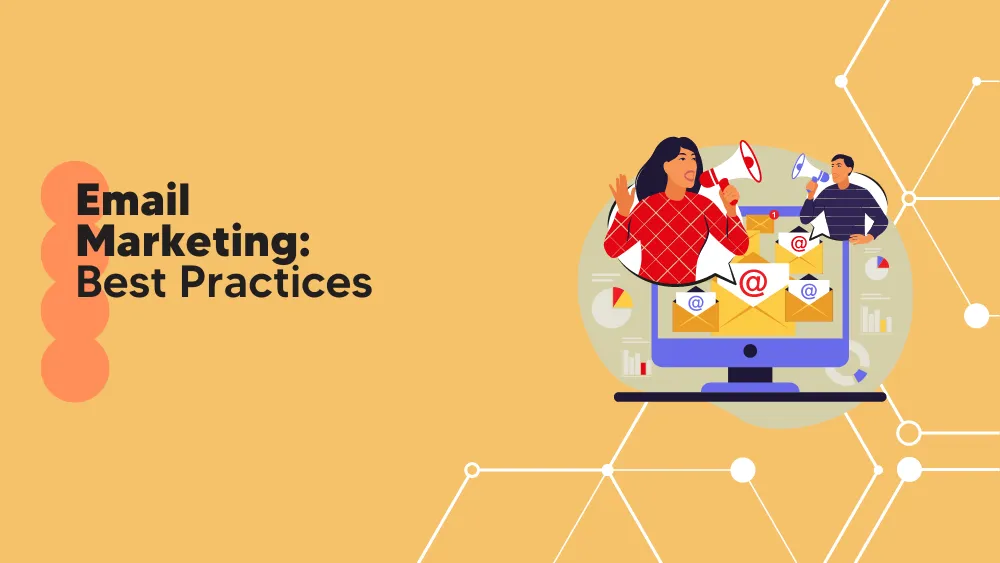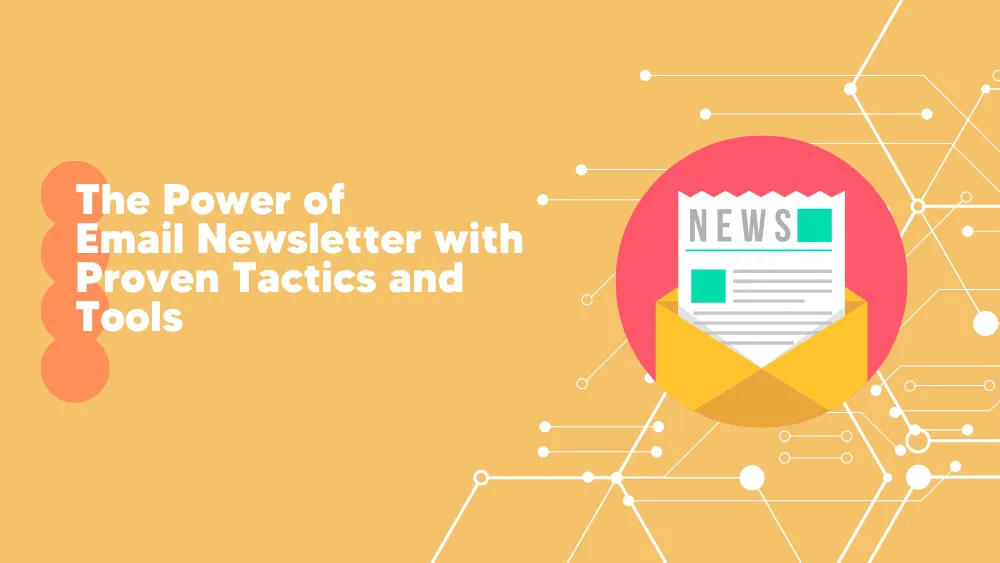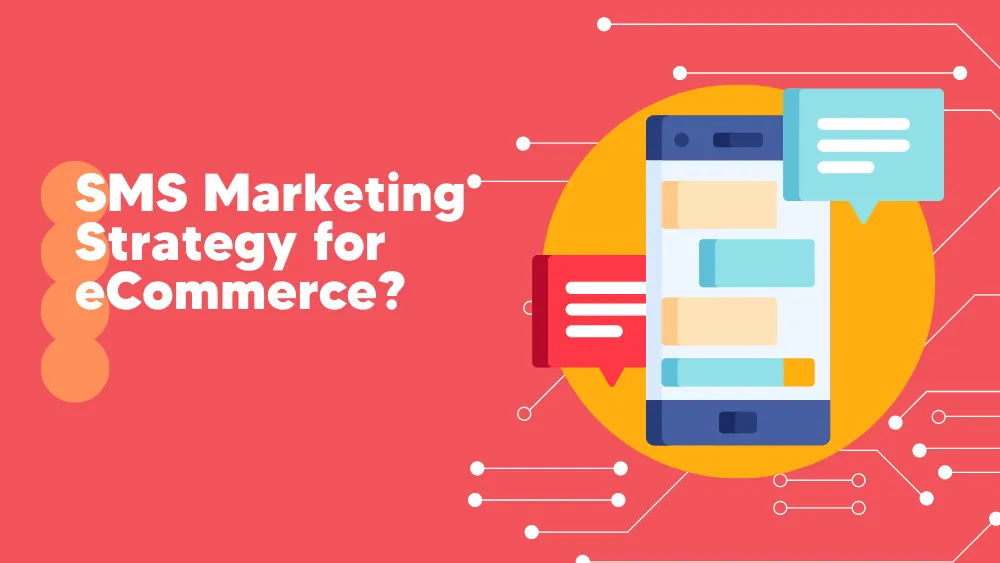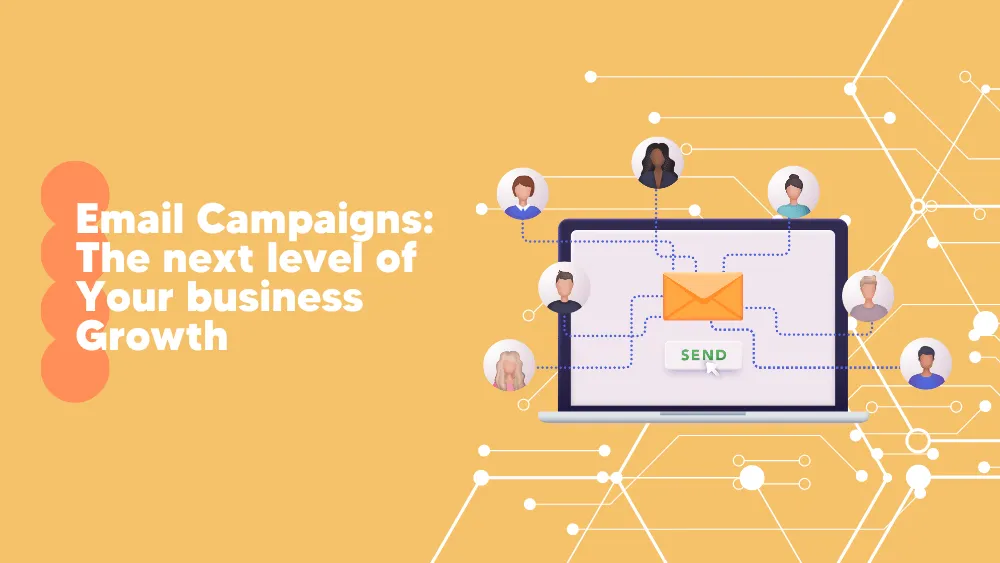Choosing an email marketing service can be daunting. Brevo vs. Mailchimp is a common comparison for businesses seeking the best platform for their marketing needs.
As someone who’s used both platforms, I’ll break down how they stack up – from features to pricing and deliverability.
Key Takeaways- Pricing & Scalability: Brevo (formerly Sendinblue) is generally more affordable for high-volume senders, while Mailchimp can get expensive as your contact list grows.
- Features & Channels: Mailchimp offers a broader marketing toolkit, while Brevo emphasizes multi-channel communication.
Brevo (Sendinblue) overview
Brevo is an all-in-one marketing and CRM platform designed to help businesses build relationships across various channels. Originally launched as an email and SMS service known as Sendinblue, it has rebranded to Brevo and expanded its offerings to include CRM, live chat, and a customer data platform.

Its core selling proposition is multichannel communication with budget-friendly pricing.
Brevo lets you manage email campaigns, SMS and WhatsApp marketing, chat messages, and even pipeline CRM in one place. The platform uses smart automation and now AI capabilities (via its “Aura” AI) to assist with content creation and customer segmentation.

In short, Brevo’s USP is being a cost-effective, scalable solution for businesses that want email marketing plus omnichannel outreach (all without breaking the bank).
MailChimp overview
Mailchimp is one of the most recognized email marketing services, known for its evolution from a simple newsletter tool to a full-fledged marketing platform. Now owned by Intuit, Mailchimp brands itself as an “all-in-one Marketing Platform for growing businesses”.

Mailchimp’s strength lies in its rich feature set and polished tools – it comes with over 100 email templates, a sophisticated content editor, and extras like a Creative Assistant (to design graphics) and extensive integrations.

Mailchimp’s unique selling proposition is its extensive experience and maturity. Having been around for decades, it offers a proven infrastructure but can be pricier and complex at times.
In essence, Brevo = multichannel + affordability, Mailchimp = feature-rich + widespread integration.
Next, let’s compare specific features side by side.
Brevo vs MailChimp – feature comparison
Both Brevo and Mailchimp cover the essential features for effective email marketing, but they do have differences in implementation. Here’s how they compare on key aspects:
Email Editor & Templates
For people in marketing, the email editor is where you will spend a lot of time.
Brevo offers a drag-and-drop email editor that’s intuitive and beginner-friendly. You can start from scratch or choose from 40+ responsive email templates included in the platform.

The editor supports all the basics like text blocks, images, buttons, and even conditional display of content (dynamic content for different contacts).
Brevo also lets more tech-savvy users toggle to an HTML editor for custom code. Overall, I’ve found Brevo’s email builder fast and straightforward – great for quickly assembling campaigns.
Mailchimp templates
Mailchimp, on the other hand, provides an equally robust drag-and-drop editor with a larger library of 100+ pre-designed templates to choose from.
Mailchimp’s templates cover a wide variety of use cases and design styles, which is handy if you want something polished without much design work.

In my experience, Mailchimp’s editor has a few more advanced options – for example, it allows sending test emails to colleagues and collecting feedback within the editor interface, which is fantastic for team collaboration.
Both platforms create mobile-responsive emails, but Mailchimp’s experience offers advantages like a built-in spelling checker and an AI-driven Content Optimizer for improving email copy.

Both Brevo and Mailchimp have user-friendly email editors with drag-and-drop simplicity.
Mailchimp offers more out-of-the-box templates (over 100) compared to Brevo’s ~40, and Mailchimp includes some extra niceties for collaboration and optimization.
Brevo’s editor is clean and effective, just slightly more basic. Unless having a huge template selection or collaborative commenting is crucial, you’ll be well-served by either editor for designing your emails.
Automation Workflows
Automation is a big deciding factor for many marketers – you want to nurture your audience with targeted emails without doing everything manually.
Here, Mailchimp and Brevo both support marketing automation, but the depth and availability differ by plan.
Brevo automation
Brevo impresses by offering its workflow automation even on the free plan (with some limits). You can create multi-step automated sequences using an intuitive visual editor: set up triggers (like “contact joins list” or “contact clicks a link”), conditions, and actions (send email, add to list, etc.).

On the free plan, Brevo lets you create workflows for up to 2,000 contacts, allowing small businesses to set up welcome series or cart abandonment flows without extra fees.
Once you grow, Brevo’s Business plan removes that contact limit (unlimited automation contacts) and even adds more advanced automation features if needed.
I’ve created sequences in Brevo as simple as a two-email welcome drip and as complex as a multi-branch nurture funnel based on user behavior, and it handled both well.
MailChimp automation
Mailchimp calls its automation builder Customer Journeys. In terms of capabilities, Mailchimp’s automation can be powerful: you can set up branching based on conditions (if a user opens an email, do X, if not, do Y), time delays, and multiple steps.

However, Mailchimp’s free plan is severely limited for automation – you only get single-step automations (for example, one welcome email when someone signs up, and that’s it). To unlock multi-step automated journeys, you need at least the Essentials or Standard plan.
Mailchimp’s journey builder is easy to use with a paid plan, though it may be a bit hard to find initially. It offers helpful templates for common automations like welcome series and birthday wishes to kickstart your setup.

Mailchimp also leverages its data for things like predicted segments and can automatically adjust customer paths if, say, a purchase happens (if you’ve integrated an e-commerce store).
For automation, Brevo provides more bang for $0 – you can do multi-step workflows for up to 2k contacts on the free tier. Mailchimp’s comparable automation requires a paid plan; the free plan it’s extremely basic.
Both platforms’ automation builders are user-friendly, but advanced marketers may prefer Mailchimp’s additional triggers on higher tiers. Beginners will find Bravo’s free automation appealing for starting audience nurturing at no cost.
Contact Management & Segmentation
Managing your audience and targeting the right people with the right message is crucial. Mailchimp often touts itself as having a built-in CRM for audience management.
You can import contacts, tag them, group them, and Mailchimp will track individual contact profiles (including aggregate data like lifetime value or past purchases if connected to your store.

One standout in Mailchimp is its predicted demographics and purchase likelihood features on higher plans – their algorithm can tag contacts as likely male/female, or predict who’s likely to buy again, etc., which is useful for segmentation (though these are available only on Premium tiers).

Also, Mailchimp can auto-create segments like “inactive for 30 days” or “top 20% customers” via its data science. However, note that Mailchimp limits the number of contacts on each plan and even on free (500 contacts max), so you often have to prune your list or pay more as your audience grows.
Brevo CRM
Brevo includes contact management and even offers a full CRM module if you need sales pipeline features. For email marketing, Brevo lets you have unlimited contacts (even on free plan) and you’re not charged by list size.

This key difference lets you expand your database freely, focusing only on email sending limits. Brevo’s segmentation uses filters to categorize contacts by demographics, tags, and behaviors, which can be saved as segments.
It might not be as flashy as Mailchimp’s predictive segments, but it’s quite flexible – you can stack multiple conditions to refine your target.

Brevo doesn’t auto-generate fancy segments for you, but it gives you the tools to slice and dice as needed.
One thing to highlight: advanced segmentation in Mailchimp (like combining multiple conditions or doing OR logic) is only available on their highest “Premium” plan (~$350/month).
Smaller Mailchimp plans allow basic segmentation with one condition at a time or pre-made segments, while Brevo offers multi-criteria segmentation on all plans.
Brevo offers simplicity and freedom – store as many contacts as you want, and create segments manually using filters (no extra charge for complex queries). If you’re a data geek or need CRM-like insights, Mailchimp might impress.
If you just want to maintain large lists and target them without worrying about counting contacts, Brevo’s approach is refreshing.
SMS and Multichannel Marketing
Reaching customers isn’t just about email. Let’s see who is the winner between Brevo vs MailChimp regarding SMS marketing.
Brevo is truly multichannel out of the box: beyond email, it has built-in SMS marketing, the ability to send messages via WhatsApp, a live chat widget for your website, and even support for push notifications.
Brevo aims to centralize all customer communications. For example, I’ve used Brevo to send SMS campaigns (you purchase SMS credits, then create a text message campaign in the same UI as an email).
If you have customer phone numbers, you can easily send promos via text through Brevo without needing a separate SMS service. Brevo now also supports WhatsApp campaigns, which is great for regions where WhatsApp is widely used.
Additionally, Brevo’s Conversations feature lets you manage a chat widget on your site and respond to messages from one inbox. This multi-channel capability is a big USP of Brevo; you might not use all of it from day one, but as you grow, it’s there.
MailChimp SMS
Mailchimp historically focused on email but has expanded into other marketing channels, yet mostly in the digital marketing sense rather than direct messaging.
Mailchimp’s SMS feature, acquired through Chatitive, is still new and less seamless. Currently, it functions as an add-on, requiring users to purchase SMS credits and obtain approval for a sending number.
It’s not as natively integrated into campaigns as Brevo’s SMS is. Also, Mailchimp does not support WhatsApp or on-site live chat as part of its product suite.
Multichannel marketing on both platforms
Both platforms offer web forms and landing pages for lead capture, but Mailchimp includes landing pages for free, while Brevo requires a higher plan.
They also both support retargeting ads, with Mailchimp integrating natively and Brevo allowing integration with Facebook Ads if you connect your account.
If you need an all-in-one communicator – email newsletters, text messages, WhatsApp blasts, chat – Brevo wins hands down.
Mailchimp is more of an all-in-one marketing hub – it branches into areas like social media and advertising, but for direct messaging channels, it’s comparatively limited (SMS is possible but not as straightforward).
A/B Testing and Analytics
Mailchimp and Brevo both offer A/B testing, but with some nuances. Mailchimp allows A/B tests (called “multivariate testing” on higher plans) where you can try different subject lines, sender names, or even content variations.
On the Standard plan, you can test up to 3 variations of an email campaign to a sample of your list, and Mailchimp will determine the winner (e.g., which subject gets the highest open rate) and send the winning version to the rest. The free plan does not include A/B testing.
MailChimp analytics
Mailchimp’s background in email provides a complex analytics dashboard with features like open and click rates, heatmaps of clicks, e-commerce tracking, and comparative reports across campaigns.
Mailchimp offers a useful benchmarking feature that compares your open rates to industry averages. Additionally, the Content Optimizer on higher plans analyzes your wording and length, providing a quality score based on past data.
Brevo A/B testing
Brevo offers A/B testing as well, though it keeps it a bit simpler. You can perform A/B tests of emails by splitting your recipients and sending two versions (commonly to test subject lines or different send times).
Brevo’s platform will track which variant performs better, and you can then send the better one to the remaining contacts. This is available on Brevo’s free or basic tier too, as far as my experience goes – I was able to test subject lines on the free plan.
Brevo analytics
Brevo’s analytics dashboard gives you the standard metrics: deliveries, opens, clicks, bounces, unsubscribes, etc., in real-time. It also highlights top links clicked and geolocation of opens.
One thing I liked is Brevo’s deliverability reporting – since Brevo also offers transactional email, their stats section includes deliverability insights by inbox provider (Gmail, Yahoo, etc.), which is useful if you’re monitoring inbox placement.
Mailchimp doesn’t show that level of granular deliverability detail in the dashboard.
Both tools allow you to test and optimize campaigns, but Mailchimp offers more advanced A/B testing and analytics, including multiple variations, AI insights (at higher tiers), and detailed e-commerce reporting for online store emails.
Brevo covers the basics effectively – simple A/B tests and solid real-time analytics. Unless you need multivariate testing or fancy AI feedback, Brevo’s analytics will get the job done for most marketing needs.
Brevo vs MailChimp AI features comparison
AI is the hot new thing in marketing software, and both Brevo and Mailchimp have started integrating artificial intelligence to help users work smarter.
Mailchimp’s AI Features
Mailchimp has been investing in AI for a few years (especially after being acquired by Intuit). It now boasts 20+ AI and data science-driven features in-app. Some of the notable ones:
- Content Generator (Beta): This is Mailchimp’s built-in GPT-powered tool that can write email copy for you. You enter a prompt or select your industry and tone, and it will generate draft text for your email.
- Creative Assistant: An AI design tool that can auto-generate graphics and designs for your emails or ads, using your brand’s colors and images. This saves time if you don’t have a designer.
- Send-Time Optimization: Mailchimp’s AI can analyze your audience’s engagement patterns and suggest the optimal time to send each email for best open rates.
- Predictive Segmentation: This is quite advanced – it’s like having a data scientist clustering your audience for you. On the Premium plan, you can create segments such as “most likely to purchase again” using these AI-driven tags.
- Product Recommendations: For e-commerce users, Mailchimp’s AI looks at your customers’ purchase history and email engagement to recommend products they might like.
Mailchimp’s AI features collectively function as a virtual assistant to optimize different aspects of your campaigns. They’re mostly available on Standard or higher plans (some, like basic content suggestions, might roll out to Essentials too over time).
Brevo’s AI Features (Aura)
Brevo, being newer in the AI game, recently introduced its “Aura AI” features. While not as numerous as Mailchimp’s, they are aiming to cover similar ground:
- AI Content Creation: Brevo’s Aura can assist in writing email content. This likely works similarly to Mailchimp’s content generator – you provide some input and the AI suggests copy for your email or newsletter.
- Smart Segmentation: Brevo claims Aura can help segment your audience intelligently. This could mean analyzing your contact data to create segments (perhaps identifying clusters of engaged vs unengaged users, or segmenting by behavior patterns).
- Send Time Optimization: Brevo’s AI can determine the “best time for each individual” to send emails. This is directly analogous to Mailchimp’s send-time optimization.
- Contact Enrichment (Sales CRM): Outside of email campaigns, Aura AI can enrich contact data in the CRM – for example, finding publicly available info about a lead (like their LinkedIn or job role) to flesh out your contact profiles.
Brevo’s AI is positioned as your “always-on, AI-powered team” that does the heavy lifting of writing, segmenting, and optimizing.
It’s a newer initiative, so probably not as mature as Mailchimp’s suite yet, but it’s exciting for Brevo users to see AI capabilities being added without needing a dozen third-party tools.
Brevo vs MailChimp ease of use & UI
No matter how powerful a platform is, everyday usability matters. Here’s my take on the ease of use for Brevo vs Mailchimp:
When I first used Mailchimp, I found it had a bit of a learning curve, mainly because it’s packed with features. The navigation menu is broad (Campaigns, Audience, Automations, Website, Content Studio, etc.), and it truly tries to be a one-stop marketing shop.
Mailchimp has improved its UI over the years, offering a cleaner look and guided setup prompts. For simple email campaigns, the process is linear, guiding you through choosing an audience, designing the email, setting the subject, and sending it.
It’s the overall information architecture of Mailchimp that can be confusing at times, especially after they added so many new functions.
Brevo, in contrast, felt more streamlined for core email marketing tasks when I started using it. Its interface is generally straightforward: you have a clear menu for Campaigns, Contacts, Automation, Transactional, etc.
Brevo offers a less intimidating, modular approach compared to Mailchimp, making email campaign creation straightforward with fewer options.
While Mailchimp has extensive tutorials and a large community for support, Brevo (Sendinblue) also provides solid documentation and helpful tooltips, but has a smaller presence in discussions.
Another factor is language and localization: Brevo, originating from Europe (France), offers support and interfaces in multiple languages, which might be useful if you or your team are non-English speakers. Mailchimp is primarily English-centric (though it supports some localization too).
In daily use, I find myself a bit faster in Brevo for creating basic campaigns, just because it’s very straightforward.
Mailchimp takes a bit longer for me because I explore its extra options. Once you’re used to it, it runs smoothly, and their mobile app is decent for checking campaign status on the go (I’ve used it more than Brevo’s app).
Brevo vs MailChimp integrations & extras
One reason Mailchimp became so popular is its rich ecosystem of integrations. Mailchimp connects with just about every platform out there.
Mailchimp advertises 300+ app integrations in its directory. Additionally, Mailchimp’s API is well-documented, so developers can custom-integrate as needed.
Brevo offers around 150+ integrations, including key platforms like WordPress, Shopify, and Salesforce. While it may lack some niche integrations compared to Mailchimp, its robust API and support for Zapier significantly extend its integration capabilities.
For many small businesses, Brevo’s major integrations, website forms, e-commerce, and CRM will typically suffice. However, if your tech stack is complex, check Brevo’s integration list or consider using Zapier for additional connections.
Landing Pages & Forms
An important feature is the landing page builder. Mailchimp offers unlimited landing pages for free, making it easy to create sign-up or promotional pages.
Brevo also has a landing page builder, but it’s only available on higher plans starting at $65/month and limits you to 5 pages unless you pay more.
If landing pages are important and you prefer an all-in-one tool, Mailchimp offers good value. Both platforms have embedded and pop-up forms to grow your list.
I found Brevo’s form builder easy and flexible, allowing users to choose interest lists, while Mailchimp’s is decent but less user-friendly, and not all designs are mobile-optimized.
E-commerce and CRM extras
If you run an online store, Mailchimp offers e-commerce features like product retargeting and abandoned cart emails on its Standard plan, along with product recommendations.
Brevo also provides abandoned cart emails and e-commerce automation, but you’ll need to set up workflows for them. Additionally, Brevo includes a free lightweight CRM for managing deals, while Mailchimp requires a separate CRM for larger needs.
Third-Party Plugins and Extensions
Mailchimp’s long presence means there are many third-party extensions, like email template packs, analytics enhancers, etc., built by the community. Brevo’s marketplace is smaller but growing.
Deliverability performance
Even the most beautiful email is pointless if it doesn’t reach the inbox. Both Brevo and Mailchimp are reputable ESPs that enforce good sending practices, but how do they compare?
Mailchimp is highly regarded for its email deliverability and is one of the largest email sending platforms globally. Mailbox providers like Gmail recognize their sending IPs, allowing emails to reach inboxes or the Promotions tab.
By following best practices, users can achieve high deliverability rates, with independent tests showing rates around 92.6%.
Brevo performance
Brevo (Sendinblue) used to have lower deliverability, averaging 74-75%, but recent data shows improvement, with rates reaching up to 90%, surpassing Mailchimp’s 86%. I’ve found Brevo reliable for permission-based campaigns, with no issues of emails landing in spam.
The platform also provides an edge for transactional emails (e.g., order receipts, password resets) by using a separate infrastructure for better deliverability. In comparison, Mailchimp emphasizes marketing emails, with its Transactional Email add-on (formerly Mandrill).
Mailchimp generally shows higher and more stable deliverability compared to Brevo, according to a reputable email testing service.
While Brevo has improved and is noted as a strong competitor, both platforms can achieve high deliverability (around 90% inbox placement) with good list management practices like double opt-in and domain authentication.
For critical emails, conservative senders might prefer Mailchimp, but Brevo is still reliable for many businesses.
Brevo vs Mailchimp – how do their pricing compare?
Pricing is often the make-or-break factor in the Brevo vs. Mailchimp decision. The two platforms have very different pricing models, so let’s break them down:
MailChimp pricing
Mailchimp uses a subscriber-based pricing model for its Marketing plans, where costs depend on the number of contacts in your account.
All plans allow unlimited email sends per month, but prices increase with your contact count. The main tiers are:
- Free Plan: $0 per month for up to 500 contacts and 1,000 emails (500 daily limit). The free plan has limited features, with no multi-step automation, A/B testing, and includes Mailchimp branding in the footer.
- Essentials: Starts at $13/month for 500 contacts, offering premium features. Prices increase with more contacts.
- Standard: Starts at $20/month for 500 contacts. Costs increase with additional contacts; for example, 5,000 contacts could be around $75/month, and 10,000 contacts about $110/month.
- Premium: Starts at $350/month, with around 10k contacts included. Premium offers all features, suited for organizations with 10k+ subscribers. Prices increase steeply for larger lists.
Mailchimp has a Pay As You Go option for buying email credits, perfect for infrequent senders due to the long expiration and the Essentials plan features. Regular senders may find monthly plans more cost-effective.
Brevo pricing
Brevo offers email volume-based plans with unlimited contacts. Choose a plan based on the number of emails you need to send each month.
- Free: allows 300 emails/day (about 9,000/month) and unlimited contacts. It includes core features like campaigns and workflows for up to 2,000 contacts, which is great for small projects.
- Starter (formerly Lite): Starts at $9/month for up to 5,000 emails. You can upgrade to 10,000 emails for about $15, 20,000 for ~$25, and 40,000 for ~$39.
- Business (formerly Premium): Starts at $65/month, which includes a higher email send limit and advanced features. The email send limit is around 20k emails at $65, with scalable options for higher volumes.
- Enterprise: Custom pricing for very high volumes (millions of emails/month) or advanced needs. This comes with priority support, dedicated infrastructure, etc.
Try Brevo Free Trial and level up your marketing strategies!
Differences between Brevo vs MailChimp pricing
To illustrate the pricing difference, let’s say you have 10,000 contacts and send them one newsletter per month (10k emails), Mailchimp Standard would cost about $110/month, while Brevo charges around $29/month.
That’s a significant saving, as Brevo allows for more than 10k contacts without extra storage fees. Even if you sent 4 emails a month (40k emails), Brevo’s cost would be about $39, still much cheaper than Mailchimp’s ~$110, which could increase if your contacts exceed 10k.
Both platforms allow you to upgrade/downgrade as needed and cancel anytime (no long-term contract required, unless you opt for an annual plan for a discount).
Hidden costs or considerations
Mailchimp charges extra for add-ons like Mandrill transactional emails and SMS. Brevo may charge for dedicated IPs or extra landing pages, but generally has fewer surprise costs since most features are included or optional, with add-ons like extra landing pages being relatively low-cost.
Mailchimp = pay for contacts, Brevo = pay for emails. For equivalent usage, Brevo can be up to 5- 10x cheaper in high-volume scenarios, whereas Mailchimp might be just a few dollars difference in low-volume scenarios.
Brevo vs MailChimp – Which should you choose?
Both Brevo and Mailchimp are excellent email marketing platforms, but they cater to slightly different priorities. Having used both, here’s my summary:
Brevo is more user-friendly for daily campaign building, akin to a compact car, while Mailchimp offers extensive features, guidance, and is like a loaded SUV. Your choice should depend on your list size and marketing needs.
If budget-friendly multi-channel options are essential, Brevo is ideal.
However, if you need advanced features like ads and analytics and prefer a well-established platform, Mailchimp is more suitable.
Ultimately, it’s about finding the right fit based on your priorities, so consider testing both platforms since they offer free plans.







